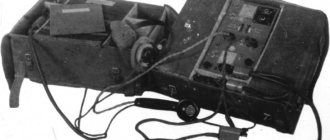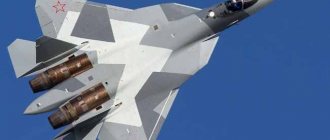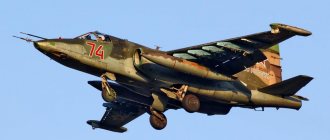A critically important factor in ensuring superiority over the enemy today is the level of information support for combat operations. The outwardly not very spectacular, but consistently effective military work of military signalmen allows the troops to coordinate efforts, quickly respond to sudden changes in the situation and solve all assigned tasks. In the context of the rapid development of high technologies, the Russian Armed Forces are now undergoing a phased transition of the military communications system to digital methods of processing and transmitting information.
Space technology
The Russian 201st military base in Tajikistan will be completely re-equipped with modern communications equipment by the end of the year. This was announced by the head of the communications department of the Central Military District, Major General Gennady Tuchin. Instead of equipment of earlier modifications, the formation will receive R-149MA command and staff vehicles, R-419LM1 radio relay stations, P-243 integrated communications equipment and an R-441LM satellite communications station. New communication systems will also be supplied to the Kant aviation base of the Russian Aerospace Forces in Kyrgyzstan.
The latest equipment will ensure trouble-free and secure communications and transmission of digital information on the territory of Central Asian states friendly to Russia. Modern technology will allow data exchange even with the most remote and inaccessible areas of the region. For example, the R-441LM Liven satellite communications station is designed to organize noise-free satellite communications using spacecraft repeaters. The mobile station is mounted on a high-capacity Ural-4320 truck with a 6x6 wheel arrangement. The dish antenna rises from the compartment and is mounted on the roof. Part of the communications complex equipment is located in a trailer, which during operation is connected to the head machine with a special cable. The time to fully prepare the R-441LM for work in the field on any terrain does not exceed 20 minutes.
© mil.ru The military base in Tajikistan will be completely re-equipped with modern communications equipment by the end of the year.
The Liven station operates through repeaters installed on spacecraft that operate in geostationary and highly elliptical orbits. "Rain" allows you to maintain stable telephone and telegraph communications with the ability to access civilian telephone numbers, as well as digital data transmission.
Radio relay stations R-419LM1 will operate in conjunction with satellite communication stations at the Russian 201st military base in Tajikistan. They must ensure the rapid deployment of radio relay communication lines, the organization of separate secure radio channels, video conferencing, and the transmission of digital and video data via radio signals. These digital automated communications equipment were originally developed to operate in difficult climatic conditions and are highly resistant to the effects of enemy electronic warfare (EW) weapons. The new technology should reliably ensure uninterrupted communication between control centers and units operating in mountainous areas.
Reference
Signal troops are special troops designed to deploy a communications system and provide command and control of formations, formations and units of the Ground Forces in peacetime and wartime. They are also tasked with operating systems and automation equipment at control points. These special forces include central and linear formations and units, units and units of technical support for communications and automated control systems, communications security services, courier-postal services and others.
Modern communications troops are equipped with mobile, highly reliable radio relay, tropospheric, space stations, high-frequency telephony equipment, voice-frequency telegraphy, television and photographic equipment, switching equipment and special message classification equipment.
© mil.ru
In Transbaikalia, VVO signalmen completed more than 200 tasks for receiving and transmitting control signals during the summer training period of 2021.
Military satellite communications systems
The Russian army is armed with dozens of types of satellite communication stations, and all centers differ from each other in their operational and technical structure, which is determined by the specifics of the tasks they solve. How are satellite communication stations and centers equipped with unified equipment systems? Currently, earthly means of the first and second generations are used to provide CS. The first generation means form the “Crystal” satellite communications complex, the second - “Liven” and “Legend”. In the “Crystal” complex the main (base) stations are the R-440-U node stations and the R-440-O terminal stations, and in the “Liven” complex there are the R-441-U node stations and the R-441-O terminal stations.
Space communication station R-440-O in a stationary version
Spacecraft with repeaters on board ensure simultaneous operation of a large number of satellites with each other. The main role here is played by a repeater with a set of receiving and transmitting antennas. The simplest repeater is a transceiver device with the help of which weak earth signals captured by the receiving antenna are separated from the noise in the receiving device, transferred in frequency to avoid excitation of the repeater, amplified in the transmitting device and transmitted using the transmitting antenna in the direction of the Earth. The rest of the spacecraft equipment is the power supply and life support systems of the repeater. In practice, more complex repeaters are used, in which terrestrial signals are demodulated and combined into a common group signal transmitted to Earth.
Satellite communication station R-441-UVS
The CS system includes several spacecraft in geostationary orbit (GSO) of the Gran and Globus-1 type. Spacecraft of the "Gran" type provide the operation of the terrestrial complex of the "Crystal" complex, and the spacecraft of the "Globus-1" type provide the terrestrial systems of the "Liven" and "Legend" complexes. Each spacecraft serves a certain part of the earth's surface (zone). The service area of the spacecraft is determined by the position of the spacecraft itself relative to the Earth and the antenna used. The points at which spacecraft data are output are determined by international agreements.
Spacecraft in GEO do not provide operation of satellites from high-latitude regions, therefore, to solve this problem, the satellite system includes Molniya-3 type satellites in highly elliptical orbits (HEO), from which these regions are clearly “visible”. Spacecraft on a VEO make one orbit around the Earth in 12 hours, and its use for communication is possible only for 6 hours. Therefore, to ensure round-the-clock operation, 4 devices of this type are needed, forming the so-called “four”. The system may include several “fours”, which makes it possible to ensure the operation of a large number of stations. Spacecraft of the Molniya-3 type are designed to operate the earth stations of the Kristall complex.
Communication repeater.
Communication repeaters are designed to relay terrestrial satellite communications signals. They are installed on spacecraft launched to geostationary and VEO. The satellite communication system uses repeaters with direct relay (DR) and on-board signal processing (OSP).
In the first case, the repeater ensures the reception of signals from the station, their selection, frequency conversion, amplification and transmission. The signals at the input and output of the repeater differ in frequency shift.
The advantage of repeaters of this type is their simplicity and the ability to use earth stations of any type, the operating frequency range of which coincides with the frequency range of the repeater.
The disadvantages of these repeaters are due to the need for simultaneous frequency conversion and amplification of a large number of signals (according to the number of stations operating in the trunk). With direct relaying, the power of the output power amplifier is distributed among all signals received at its input, including interfering ones (such as the receiver's own noise, intentional and unintentional interference), so some of the power is lost. In addition, when several signals are amplified simultaneously, so-called combinational interference occurs, which also consumes part of the power. In addition, this interference can coincide in frequency with useful signals, worsening the quality of their reception. Finally, during direct relaying, noise accumulates: the earth station receiver, along with the useful signal, also receives noise generated by the repeater receiver, which, when added to the own noise of the earth station receiver, degrades the quality of the radio link. For normal operation of satellite communication lines using direct relay, it is necessary to reduce the number of stations simultaneously operating in one trunk. The trunks with signal processing, usually as an emergency or backup, have a direct relay mode.
When using direct relay to work with several correspondents, each earth station must have the number of receivers corresponding to the number of correspondents, and each of the receivers must be tuned to its own frequency. This leads to the complication of earth stations and creates certain difficulties when it is necessary to increase the number of directions and communication channels formed by them.
Repeaters with OSB differ in that the signals received from the station are demodulated and, as a rule, combined into a group signal (GS) of the trunk. At the same time, the disadvantages inherent in direct retransmission are largely eliminated.
Repeaters of this type are much more complex than PR repeaters and can only work with a certain fleet of earth stations. Their use makes it possible to significantly increase throughput due to more productive use of the output power amplifier of the barrel.
As a rule, several sets of transmitting and receiving equipment are installed in one repeater. Each such set of equipment forms a repeater trunk, and in the first case, the trunk provides direct relay of signals and is called a trunk with direct relay, and in the second case, the trunk provides complete processing (demodulation) of signals and is called a trunk with signal processing. Usually, the receiving and transmitting paths of trunks are considered separately, calling them receiving and transmitting trunks, respectively. Each trunk has its own operational and technical purpose, associated with the need to relay signals from a certain group of earth stations. For example, for the operation of a central station with several end stations, two trunks with direct relay can be allocated: one for the operation of the central station, the second for a group of end stations.
Each repeater trunk operates in its own frequency band of a certain range. Currently, the system uses the bands 4/6; 7/8 and 0.2/0.4 GHz (the first figure refers to the “ZS-RS” section, the second - to the “RS-ZS” section). The frequency band allocated to one trunk ranges from hundreds of kilohertz to hundreds of megahertz, depending on the purpose of the trunk.
Signals received in one trunk can be transmitted in another. This makes it possible to organize counterwork of stations for various purposes when they use different trunks. This possibility is realized in the presence of inter-barrel (cross) connections. Inter-barrel communications are most easily implemented in barrels with on-board signal processing, since in this case low-frequency signals are switched.
Earth stations operating through a common trunk form a specific grouping, usually quite compact geographically. Therefore, each trunk usually works on its own antennas - receiving and transmitting (sometimes transceiver antennas are used) with high directivity, which allows them to “illuminate” (serve) certain areas on the earth’s surface, called service areas. Thus, each trunk corresponds to a specific service area. If it is necessary to change service areas, in some cases the antennas can be reoriented according to commands from the Earth. The use of highly directional antennas that form specified service areas makes it possible to reduce mutual interference between communication means and the likelihood of radio suppression by the enemy.
If the antenna “illuminates” the entire surface of the Earth visible from a spacecraft, then the service area formed is called global. In this case, the antenna is said to provide global service. Global service is very convenient for building a warning system. If the antenna “illuminates” only part of the Earth’s surface, then the service is zonal. Zonal service allows you to protect a radio link from intentional interference and improve its performance by concentrating the emitted power of the useful signal in the direction of the correspondent. Area service is convenient for the operation of one central earth station or a group of closely located stations (located in the same area).
To operate the earth stations of the Kristall complex, the repeaters “Delta” (the Gran spacecraft in geostationary orbit) and Segment (the Molniya-3 spacecraft in a highly elliptical orbit) are used, and for the operation of the earth stations of the Liven and Legenda complexes " - Citadel repeater (Globus-1 spacecraft in geostationary orbit).
Mobile earth stations for satellite communications R-440-0, R-441-0, R-439
Satellite communication stations R-440-0, R-441-0 and R-439 are designed for organizing long-distance multi-channel radio communications and warning using repeaters on artificial Earth satellites. To operate the stations, repeaters are used that are installed on spacecraft launched into geostationary and elliptical orbits. The stations provide duplex telegraph, telephone, fax, telecode communications and data exchange via digital (discrete) channels. The channels formed by the stations have unified input/output parameters (joints), which allows you to connect various types of terminal equipment to them. The stations are equipped with an interference-protected (IMZ) operating mode, which provides the ability to communicate in the presence of interference, including intentional ones.
Satellite communication station R-440-0
The satellite communication station is a single-machine satellite communication station of the Kristall complex, operating through repeaters installed on spacecraft of the Gran and Molniya-3 type, launched into geostationary and highly elliptical orbits, respectively.
Counter work with the stations of the Crystal complex is ensured. The frequency range used is 4/6 GHz. The station provides reception of special signals on a separate carrier and in a general group signal.
The composition of the station's equipment makes it possible to organize 1-2 directions of satellite communication with a maximum group signal transmission speed of 4.8 or 5.2 kbit/s. In this case, medium-speed information digital channels are formed with a transmission speed of 1.2; 2.4 or 4.8 kbit/s, as well as low-speed telegraph channels with transmission speeds up to 100 baud, distributed between two directions of communication according to needs. The number of channels of various types formed is determined by the capabilities of the “Discrete” temporary combining/separation equipment used in the station. Thus, with a transmission speed of 4.8 kbit/s, 3 channels of 1.2 kbit/s and 2 channels of 100 bit/s can be organized, distributed between two communication directions. Other channeling options are also possible. With a group signal speed of 5.2 kbit/s, it is possible to operate in one direction of communication over a channel with a speed of 4.8 kbit/s. The station's channelization capabilities are discussed in more detail below.
In addition to the listed information communication channels, low-speed telegraph channels of formalized service communication with a speed of 50 baud are organized in each direction of communication.
If necessary, the station can be used in an anti-interference mode using special anti-interference equipment. In this case, it is possible to organize one single-channel communication direction with an information transmission rate of 100 or 1200 baud. The service channel is preserved.
The main technical and operational characteristics of the station are given in the table.
The R-440-0 station is mounted on one URAL-375 vehicle. The body is divided into two compartments.
During transportation, the front compartment houses the AK-12 antenna device and two autonomous power supplies AB-8-T/230. For operation, the antenna device is lifted from the front compartment using a lifting device and mounted on the roof of the equipment room.
Satellite communication station R-441-O
The R-441-O satellite communication station is a mobile station of the Liven complex, mounted on two transport units: a URAL-4320 vehicle and a trailer. The station operates through repeaters installed on spacecraft such as Globus-1 (in geostationary orbit) and Meridian (in highly elliptical orbit).
Counterwork with the stations of the Liven and Legend complexes is ensured. The 4/6 and 7/8 GHz bands are used for operation (1st and 2nd bands, respectively). At the same time, the composition of the equipment allows simultaneous reception of signals in both specified ranges, and transmission in one (optional).
It is possible to transmit and receive special signals on a separate carrier and in a common group signal.
The station allows you to organize 1…8 directions of satellite communication with a group signal transmission speed of up to 12 kbit/s. In this case, medium-speed channels with a transmission rate of 1.2 can be formed; 2.4; 4.8 and 9.6 kbit/s, as well as low-speed channels with transmission rates up to 100 bit/s.
The channeling capabilities of a station are determined by the “Agat” temporary combining/separation equipment used in it. The number of formed channels and communication directions is related to the speed of the group transmission signal as follows. The group signal is formed from basic sequences of 1.5 kbit/s, each of which combines one signal of 1.2 kbit/s and one of 100 bit/s, as well as service sequences. Thus, at a HS speed of 12 kbit/s, 8 channels of 1.2 kbit/s and the same number of channels of 100 bit/s are formed, which can be distributed between communication directions. If it is necessary to organize higher-speed channels, the basic sequences are combined and the number of possible communication directions is reduced.
In each direction of communication, a telegraph channel of formalized service communication is organized, allocated from the total number of telegraph communication channels formed by the station.
The station provides operation in a noise-free mode. The main option is to work for transmission with signals with pseudo-random tuning of the operating frequency (PRFC), and for reception - FM-ShPS (when working in trunks 4 and 5 of the Citadel repeater). In trunks with direct signal relay, the FM-ShPS mode can be used for transmission and reception.
The station equipment provides operation in radio-automatic telephone exchange mode both on fixed and unfixed repeater lines. The station provides automated control, implemented using an automated control subsystem (ACS). The control system ensures the implementation of all station control functions.
The main technical and operational characteristics of the station are presented in the table.
The station is located on two transport units: a URAL-4320 vehicle (hardware unit U023) and a trailer (hardware unit U022).
The body of the hardware room U023 is divided into two compartments. The front compartment houses the U100B-U antenna device (in transport position), the MAD-127/220 dehydrator and power supply elements, and the rear compartment houses the AD-30U-T/400-1V electrical unit. The antenna device is equipped with input devices for bands 1 and 2 (KN-302TE and KU-302LT, respectively). To operate, the antenna device on the machine is lifted from the compartment and mounted on the roof of the equipment room. The station equipment is located in a trailer. During operation, the equipment rooms are connected to each other by cables from the station kit; a flexible waveguide of elliptical cross-section is used to transmit a high-power microwave signal to the antenna.
Satellite communication station R-439
The R-439 satellite communication station is a mobile station of the Legend complex.
The station operates through repeaters installed on spacecraft such as Globus-1 (in geostationary orbit) and Meridian (in highly elliptical orbit). Counterwork with the stations of the Liven and Legend complexes is ensured. Operating frequency range - 4/6 GHz. It is possible to receive special signals on a separate carrier and in a common group signal.
The station allows you to organize 1…4 directions of satellite communication at a group transmission signal speed of up to 6 kbit/s. In this case, medium-speed channels with a transmission rate of 1.2 can be formed; 2.4; 4.8 kbps, as well as low-speed channels with transmission rates up to 100 bps. The channeling capabilities of a station are determined by the “Agat” temporary combining/separation equipment used in it. The number of formed channels and communication directions is related to the speed of the group transmission signal as follows.
The group signal is formed from basic sequences of 1.5 kbit/s, each of which combines one signal of 1.2 kbit/s and one of 100 bit/s, as well as service sequences. Thus, at a GS speed of 6 kbit/s, 4 channels of 1.2 kbit/s and the same number of channels of 100 bit/s are formed, which can be distributed between communication directions. If it is necessary to organize higher-speed channels, the basic sequences are combined and the number of possible communication directions is reduced.
In each direction of communication, it is possible to organize a telegraph channel for formalized service communication, allocated from the total number of telegraph communication channels formed by the station.
The station provides operation in a noise-free mode. The main option is to work for transmission in the PDFR mode, and for reception - FM-ShPS (when working in the 4th barrel of the Citadel repeater). In trunks with direct signal relay, the FM-ShPS mode can be used for transmission and reception.
The main option for the station to operate is to operate in radio-automatic telephone exchange mode both in fixed and unfixed communication directions (repeater lines), implemented in the 4th trunk of the Citadel repeater. When operating in radio-PBX mode in assigned directions, the station constantly operates at a speed of 6 kbit/s, occupying one of the repeater lines allocated to it. In this case, 4 channels of 1.2 kbit/s are formed, provided to subscribers upon their request for the duration of negotiations. When working in unassigned directions (lines), the station switches on radiation as needed for the duration of negotiations, providing the subscriber with one channel at a speed of 1.2 kbit/s, while the transmission speed is 1.5 kbit/s.
When the station is operating in the 1st trunk, it is possible to organize a radio-PBX mode in a fixed direction over 2 channels with a speed of 1.2 kbit/s from 4 channels formed by the station at a group signal speed of 6 kbit/s. All 4 channels can be used as fixed channels.
The station includes a set of single-channel terminal equipment that allows you to use the created communication channels directly from the equipment room.
The station control is automated, implemented using the control computer of the station.
The main technical and operational characteristics of the station are presented in the table.
The station is located on two transport units: a URAL-4320 vehicle and a two-axle trailer. The equipment room body is divided into two compartments. The front compartment houses the AK-12ShDL antenna device (in transport position) and the STS-10/0.5S stabilizer. The N302TE input device is installed on the antenna device. To operate, the antenna device on the machine is lifted from the compartment and mounted on the roof of the equipment room. The trailer is equipped with a power station ED2x8-T/400-1VPS (“Toluene”). The rear compartment (operator compartment) houses the station equipment. An OV-65 heater and an FVUA filter-ventilation unit are installed outside the equipment room.
Low-energy satellite communication stations.
Satellite communication station R-439P
The earth transportable satellite communication station R-439P is designed for organizing satellite communication lines and networks using communication repeaters on the Globus-1 and Yamal satellites located in geostationary orbit.
Satellite communication directions and networks at R-439P stations can be deployed in the interests of solving control problems at tactical, operational-tactical and higher levels of command and control or for solving special problems. In these networks (directions) via a digital duplex communication channel at a speed of 1.2; 2.4; 4.8 or 9.6 kBit/s ensures the transmission of the following types of messages: - encrypted telephone communication or data transmission; — open telephone communication when pairing with a telephone exchange; — transfer of machine-to-machine data; — transmitting and receiving calls, and maintaining open telephone communication directly between station operators using built-in vocoder speech converting devices (STUs).
In this case, the station forms a single-channel duplex communication direction using the frequency (frequency-code) method of multiple access in trunks with PR signals.
The R-439P satellite communication station provides simultaneous operation of reception and transmission without manual search and adjustment at any frequency multiple of 500 kHz with a step of 500 kHz in the frequency ranges: for reception: 3533±8 MHz - in trunk No. 2 of the Globus-1 satellite ; 3477.5 ± 5 MHz - in trunk No. 3 of the Globus-1 satellite; 3473.75±2.25 MHz - in trunk No. 2 of the YAMAL satellite; for transmission: 5858 ± 5 MHz - in trunk No. 2 of the Globus-1 satellite; 5765 ± 5 MHz - in trunk No. 3 of the Globus-1 satellite; 5799.75±2.25 MHz - in trunk No. 2 of the Yamal satellite
The station provides transmission and reception of information signals via a duplex digital channel in operating modes at the speeds indicated in the table.
Satellite communication station R-438T
The small-sized (portable) satellite communications station R-438 (“Barrier-T (TC)”) is designed to provide satellite communications in the interests of front-line and army reconnaissance, as well as airborne and air assault formations. Other options for its use are possible, including to provide separate connections in the TZU and RAM.
The main distinctive features of the station are:
— small dimensions (the station is made in the form of a rectangular package with built-in waveguide slot antennas, package dimensions 500x480x180 mm); — small weight (the weight of the station equipment set is about 15 kg); — low power consumption (no more than 90 W); — ability to work in duplex and simplex information exchange networks; — lack of noise-protected methods of information transmission; — low bandwidth (channel transmission speed no more than 1200 baud); — availability of an automation system for controlling the station and monitoring the functioning of its elements.
The operation of satellite communication networks using R-438 stations is carried out in trunks with PR signals (trunk No. 4) of the RS on the Globus-1 (Globus) spacecraft located in a stationary orbit. In this case, the frequency method of MD stations to the signal relay trunk is used, divided into 10 operating frequencies every 50 kHz, which is 500 kHz (5859, 75 ... 5860, 25 MHz). The transmission frequency range of the trunk has the same band and number of operating frequencies with their nominal value of 3634.75...3635.25 MHz.
Depending on the OA used in the communication networks (directions) of portable stations, the following types of communication can be provided:
— classified telephone of guaranteed durability using equipment such as T-230-1A (“Flywheel”), “Stability”; — classified data transmission using equipment type T-235-1U (B); — classified PD using the Olkhon-PK correspondent sensor; - unclassified service PD with a TPU from the station with the ability to conduct formalized official communication, transmit (receive) “Receipt” commands, exchange information between stations using the buffer memory of the TPU, automatically read formalized service information or information from the buffer memory of the correspondent TPU.
The terminal equipment is interfaced with the R-438 station only via the S1-FL-BN (S1I) interface at an information transmission rate in the channel of 1200 Baud. In trunk No. 4, and the Citadel RS, several networks and communication directions of portable stations can be organized.
Upgraded satellite communication station R-438M
According to the nature of information exchange, satellite communications at R-438 stations can be simplex or duplex. In simplex satellite communications, work between stations is carried out using the same transmit and receive wave numbers. With duplex satellite communications, transmitting and receiving stations working with each other simultaneously operate on different numbers of transmitting and receiving waves.
The R-438 station provides operation: in simplex mode: - with data transmission equipment (ADT) type T-235-1U; — with correspondent sensor (CD) “Olkhon-PK”; — with equipment type T-231-1U (“Stability”); — from the VPU of the station with a preliminary set of information on the keypad; in duplex mode: - telephone communication - with equipment type T-230-1A, “Stability”; — telephone communication — with AT-3006 equipment (directly or through T-230-1A); — with data transmission equipment type T-235-1U.
The R-438Ts central station provides operation in the same modes, as well as simplex communication in the DB mode using P-115A equipment.
In all operating modes of the R-438 stations, simultaneous reception of codegrams is ensured via the second reception channel (control channel) with recording of information into a memory device and its display on the remote (central) control panel.
In the absence of work on the main (operational) channel, official communication between station operators can be carried out through it by transmitting formalized commands from a remote (central) control panel.
Main technical characteristics of R-438T
Operating frequency range: - transmission - 5860 MHz; — reception — 3635 MHz. Number of operating frequencies - 10. Operating frequency grid - 50 kHz. The transition time to another frequency is no more than 10 s. Transmitter power - at least 25 W. Antenna gain: - for transmission - not less than 22 dB; — for reception — not less than 19 dB. The polarization of the radio signal is circular. The probability of error in the ROM channel is ≤ 10-3 when the ratio of signal energy to noise power spectral density E/N0 ≥ 9 dB. The reception method is quasi-coherent reception of signals from the OFT. The demodulator synchronization time in codogram reception mode at E/N0 ≥ 9 dB with a probability of 0.9 does not exceed 2 s. The type of signal manipulation is relative phase. The method of pointing antennas at the repeater is manual, using nomograms. Power supply - AC mains voltage 220/127 V, DC source - 12 (27) V. Power consumption from the power source - no more than 90 W. The weight of the station set is no more than 15 kg. Overall dimensions of the package: 500x480x180 mm. The number of operators is one. Station deployment time is no more than 3 minutes. Average time between failures is at least 1000 hours. The average time to restore a station under military conditions is no more than 30 minutes.
Formalized service communication between station operators is carried out using the VPU and CU. They provide transmission and reception of 512 binary decimal digits. The typing and reading of characters is carried out on the LED display board of the VPU in groups of 5 characters in each group.
Satellite communications at R-438 stations can be simplex or duplex. In simplex communication, stations working with each other transmit and receive alternately on the same frequency (wave). With duplex communication, stations working with each other transmit and receive simultaneously at different frequencies (waves) of transmission and reception.
Transmission (reception) of information to the R-438 station can be ensured: - with preliminary accumulation of information in the VPU memory - when working with the correspondent sensor (CD) "Olkhon-PK" or when entering a codogram from the VPU keyboard. Up to two codograms of the maximum length of the CD format can be recorded in the VPU memory - one for transmission, one for reception. Each codogram contains 510 binary decimal digits (102 five-digit groups); — with direct transmission of information to the channel — when operating T-230-1A or T-235-1B.
Methods for organizing satellite communications
Satellite communications at R-438 stations, depending on the tasks being solved and the available bandwidth resource of the signal relay trunk, can be organized in a direction or in a network. Several satellite communication networks (directions) of portable stations can be organized in one RS trunk.
Satellite communication direction is a method of organizing satellite communication between two stations. The direction of satellite communication can be simplex or duplex, which provides classified telephone (T-230-1A) communication, data transmission (T-235-1B, Olkhon-PK) or unclassified data transmission from the station's VPU.
A satellite communication network is a way of organizing satellite communication between three or more stations. The satellite communication network at R-438 stations can be organized: - on the same frequency (wave) of transmission and reception to ensure the transmission of circular messages (formalized commands) from the main station of the network to network correspondents or to conduct a sequential exchange of information (formalized commands) of the main station with correspondent stations or between any network correspondents. In this case, the station’s VPU, T-235-1V equipment or the Olkhon-PK sensor are used as terminal equipment; - when using two waves (transmission and reception, respectively) for alternate exchange of information from the main network station with correspondent stations; - using three waves (transmission, reception first and reception second for the service channel) for alternate exchange of information from the main station of the network with correspondent stations and simultaneous reception of formalized messages on the service channel at the TPU.
Service communication between station operators is carried out using commands typed on the VPU keypad using the station operator's conversation table R-438 and transmitted in the absence of operational information transmission. Reception of service communication commands can be carried out via the second reception channel of the station simultaneously with the reception of operational information via the first reception channel.
It should be noted that trunk No. 4, and for communication of portable stations of the Globus-1 spacecraft, has limited capacity. To prevent overloading of the repeater amplifier, simultaneous operation of stations is allowed only on eight of the ten operating frequencies.
Making the most of technology's capabilities
More than 200 tasks for receiving and transmitting a stable signal at distances from 15 to 2,500 kilometers were completed over the past summer training period by military personnel of the combined arms command of the Eastern Military District, stationed in the Trans-Baikal Territory. During the training, military signalmen used all communications equipment in service, including the recently arrived P-230T command and staff vehicles (CSVs) based on the Tiger vehicle. In addition, crews from radio stations, command and control gear and satellite communications equipment successfully organized the work of field and mobile control points during the exercises. The headquarters were provided with stable telephone and video conference communications, both through main and backup channels.
Using the capabilities of modern technology to the maximum, military personnel of the Guards Tank Army of the Western Military District conducted radio training using new generation communications equipment. At the Alabino training ground in the Moscow region, communications unit personnel deployed portable satellite stations R-444PTN "Lira", satellite communication stations "SNARK" and R-439MD2 based on armored personnel carriers, radio relay station R-419L1, medium and low power radio stations based on a KamAZ vehicle , command and staff vehicles R-149MA1 and R149AKSh1, as well as the P-260 integrated hardware communications vehicle. During the large-scale exercise, special attention was paid to organizing a satellite radio communication network for the benefit of units operating in isolation from the main forces. In total, more than 300 military personnel and about 70 units of special equipment were involved in the training.
© mil.ru
On the eve of their professional holiday, signalmen of the Western Military District tank army conducted radio training at the Alabino training ground.
Special training on organizing a control system was conducted by military signalmen of the combined arms formation of the Central Military District in the Novosibirsk region. During the maneuvers, more than 300 military personnel marched to the designated area using 50 units of special equipment. To ensure reliable control of units via a closed radio communication channel, signalmen deployed field mobile control points, configured the operation of switching equipment, special equipment and video-conferencing control points. To accomplish the task, the military personnel used modern special equipment - the R-166-05 Artek communications station and the P-260 Redut multi-purpose mobile communications complex. Acting skillfully and harmoniously, military signalmen established stable radio communications through secure channels and ensured covert command and control of troops.
The implementation of practical standards for the deployment of hardware rooms and configuration of switching equipment by the personnel of communications units was assessed by the command as “excellent”.
© mil.ru
During a special exercise, military signalmen of the combined arms formation of the Central Military District established stable radio communications via secure communication channels and ensured covert command and control of troops.
Numbers
12 000 military signalmen will receive samples of the latest types of special equipment in 2022;
76 percent in the next three years the share of modern equipment in the Russian communications troops will reach.
Commanders of the 34th Motorized Rifle Brigade(g)
From 2011 to 2014, the commander of the 34th Motorized Rifle Brigade (G) was Mikhail Stepanovich Zusko.
From the summer to the end of autumn 2014 - M. Zusko commanded the 1st AK (Donetsk, Ukraine) of the 12th Reserve Command (at that time - the Center of Territorial Forces, Novocherkassk, Russia) of the Southern Military District of the Russian Federation. For participation in hostilities on the territory of Ukraine, he received a promotion. Appears on the list of commanding officers of the Russian Armed Forces and representatives of the Russian authorities to whom the Main Military Prosecutor's Office of Ukraine reported suspicion. The medal for participation in hostilities in Ukraine for the person involved in this investigation, V. Sinyavsky, is dated December 10, 2014, and the award certificate was signed by the acting commander of military unit 01485, Colonel Alexey Nikolaevich Simakov, who before the war was the deputy brigade commander and had the rank of lieutenant colonel.
In November 2015, Colonel Sergei Dmitriev became commander of the 34th Motorized Rifle Brigade (G).
We would like to draw your attention to the fact that the list of units of the Russian Armed Forces that participated in the annexation of Crimea, announced by military prosecutor Ruslan Kravchenko in November 2016, does not include the 34th Motorized Rifle Brigade (mountain) of the Russian Armed Forces. Now there is every reason to include this unit in the list of occupiers and supplement the evidence base that is submitted to the International Criminal Court. . UPD from 10/15/2018: Russian occupier Vitaly Sinyavsky got scared and cleared his profile of photographic evidence of participation in the annexation of Crimea and occupation of Ukrainian territories in Donbass as part of the Russian terrorist organization DPR
Of the 284 photos in OK, 56 remained. So he actually signed up for our investigation. Sinyavsky probably now has big problems with the FSB, because he exposed the headquarters of the occupation forces and the Russian satellite communication station “Liven”. And we saved all the photographic evidence. You will have to answer.
UPD from 10/15/2018: Russian occupier Vitaly Sinyavsky got scared and cleared his profile of photographic evidence of participation in the annexation of Crimea and occupation of Ukrainian territories in Donbass as part of the Russian terrorist organization DPR. Of the 284 photos in OK, 56 remained. So he actually signed up for our investigation. Sinyavsky probably now has big problems with the FSB, because he exposed the headquarters of the occupation forces and the Russian satellite communication station “Liven”. And we saved all the photographic evidence. You will have to answer.
The material was prepared specifically for the InformNapalm website. When using information, an active link to the source is required (Creative Commons - Attribution 4.0 International - CC BY 4.0)
Digital ecosystems are being created
As high technology develops, the task of ensuring national security in the field of information transfer becomes more and more complex. New emerging threats must be responded to quickly and comprehensively. This is what happens.
Currently, the Ground Forces are equipped with modern means of communication and automation of the unified tactical level control system (ESU TZ), which allows for control of troops and weapons in close to real time. Four formations of the Western Military District have already been equipped with ESU TK sets; by the end of 2022, two more such sets will arrive in the Western Military District troops. Developed by the Sozvezdie concern (part of the Ruselectronics holding of the Rostec state corporation), the unified software and hardware complex (UPTK) allows you to integrate each unit of armored vehicles into a single network along with unmanned systems, electronic warfare systems, reconnaissance, guidance and fire equipment. For the first time, the UPTK implemented a fundamentally new approach - a transition from the creation of separate means of communication, control and navigation to the construction of complex automated systems and a unified information space.
Among other important new developments by domestic designers, the R-430 radio relay communication complex should be noted. It ensures the deployment of networks and communication lines with a length of up to 50 kilometers, which are capable of operating in a complex jamming environment in conditions of enemy electronic countermeasures. The stations of the R-430 complex use the maximum set of anti-jamming equipment, making it virtually invulnerable to enemy electronic warfare.
© ruselectronics.ru
High-quality management of air defense groupings is provided by the Polyana-D4M1 automated control system.
High-quality management of air defense groupings is provided by the Polyana-D4M1 automated control system. It can simultaneously combine up to 14 objects in one coordination field - such as anti-aircraft missile systems and anti-aircraft missile systems such as S-300, Buk, Tor, Tunguska. The Polyana-D4M1 automated control system is available in stationary and mobile versions.
At the International Military-Technical Forum "Army-2021", the Rostec enterprise "Inteltech" for the first time presented communication equipment for the maritime communications echelon. The “Station” software and hardware complex provides information exchange between surface ships, stationary and mobile coastal fleet control objects with onboard communication systems of existing and developed aircraft. It is important that Inteltech does not just create new communication devices, but develops a full-fledged digital ecosystem of communication tools and systems for marine, land and air equipment.
According to the press service of the Rostec state corporation, the unique S-111 communications system for the fifth-generation fighter Su-57 was developed by NPP Polet, which is part of the Ruselectronics holding. The equipment provides radio communication and data exchange between the aircraft and other aircraft for various purposes, as well as with ground, air and surface control points. The equipment uses the latest high-speed information transmission technology, providing speeds of up to 34.3 Mbit/s. This allows real-time transmission of voice messages, video, data from radar equipment and security cameras.
© RIA Novosti
A unique S-111 communications system has been developed for the fifth-generation fighter Su-57.
Station technical characteristics
| Operating frequency range, GHz | 4/6 | 7/8 |
| Output power of transmitters, not less | 90 W | 90 W |
| Antenna diameter | 2,5 | |
| Quality factor of the receiving system | +14 dB/K | +18 dB/K |
| Interference protection method on the ZS-RTR line | Frequency frequency transmission, FM ShPS with a clock frequency of 0.48; 4.8; 19.2 MHz | |
| Interference protection method on the RTR-ZS line | FM ShPS with a clock frequency of 0.48; 4.8; 19.2 MHz | |
| Group information transfer rate in on-board processing mode (up/down), kbit/s | 1,5 – 12/1,5 – 600 | |
| Group information transmission rate in the NES network (two carriers), kbit/s | 1,2; 2,4; 4,8; 9,6; 19,2 | |
| Group information transmission rate in the trunk direction, kbit/s | 32 – 2048 |
Reality simulates a unique simulator
The military specialty of a military signalman is becoming increasingly high-tech. Specialists are trained at a qualitatively new level at the interspecific regional communications training center of the Strategic Missile Forces (Strategic Missile Forces), located in Pereslavl-Zalessky. To organize the professional training of cadets trained as radiotelegraph operators, operators, cable technicians and fiber-optic communication specialists, classrooms equipped with everything necessary and modern training complexes have been deployed here, and special training programs have been developed.
Recently, the Strategic Missile Forces communications training center received a new high-tech simulator, which began to train personnel of units servicing communications equipment for various types of missile systems. The equipment of the unique educational simulator is capable of creating an absolutely realistic visualization system and providing simulation of various situations in real time. Using the new simulator, military personnel learn much faster and better how to use the latest hardware and establish communications with various levels of military command and control in any situation.
© mil.ru
A new high-tech simulator has arrived at the Strategic Missile Forces communications training center.
Resistance to combat extremes
Russian designers continue to develop communication equipment that meets the requirements of the time. At the International Exhibition of State Security Equipment "Interpolitex-2021" held in Moscow at the end of October, the Sozvezdie concern demonstrated the latest equipment for secure communications - portable and car DMR radios. The devices do not allow direct listening, have increased noise immunity, and are resistant to external factors - vibrations, shocks, extreme temperatures and moisture.
Also, the concern's specialists presented at the exhibition a new generation of domestic telecommunications equipment for creating a trusted information infrastructure - service and edge routers based on the Baikal microprocessor. These means of communication can be used to ensure information security both in the interests of law enforcement agencies and at critical civilian infrastructure facilities.










